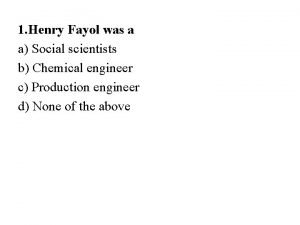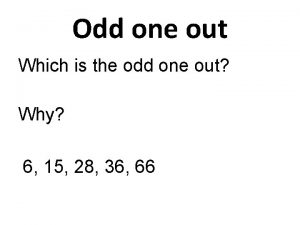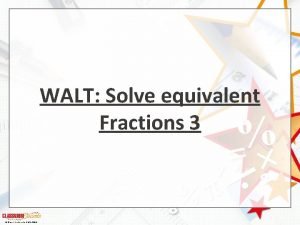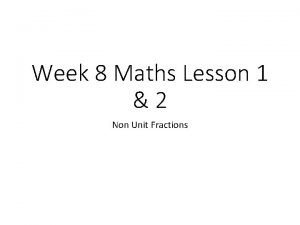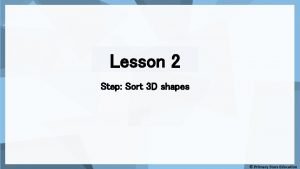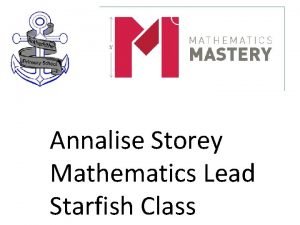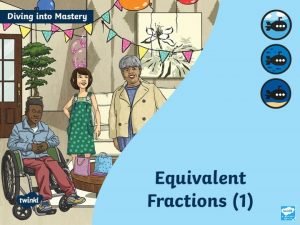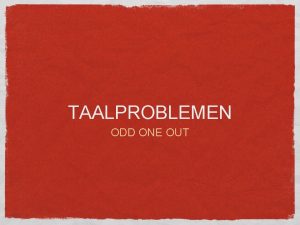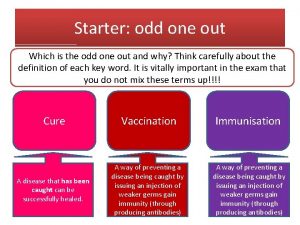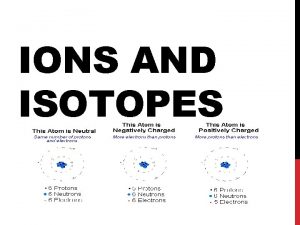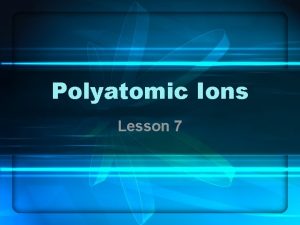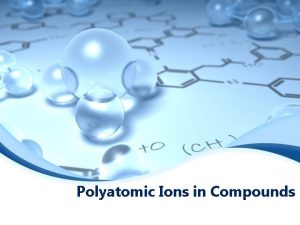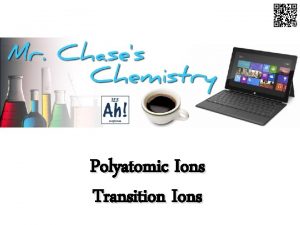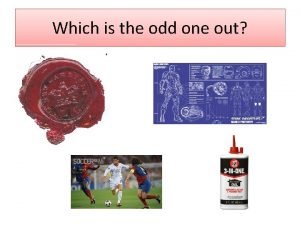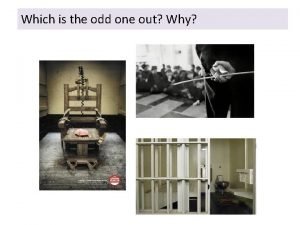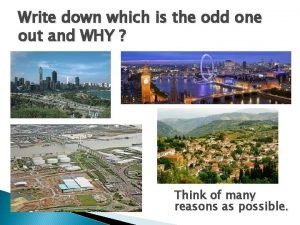Which is the odd one out Ions in















- Slides: 15

Which is the odd one out?

Ions in solution Ionic Formulae Manufacturing Halogenoalkanes Redox Bonding Atoms and Ions Halogens Dipoles Elements of the sea

Content • Nomenclature of halogenoalkanes • Physical and chemical reactions of halogenoalkanes including hetrolytic fission Process • Carry out an experiment Benefit • Explain reaction mechanisms

Nomenclature Homologous series (actually one for each halogen!) 1. Location of halogen (smallest possible) 2. Prefix of halogeno – with an o (i. e chloro/flouro/bromo – if more than 1 – alphabetically) 3. Root is parent C chain

Name these/draw these 2, 3 -dichloropentane CHCl 3 3 -bromobut-1 -ene 2, 3 -dibromo-1 -chloro-2 -methylbutane

Physical properties Halogen makes gp polar – but not sufficient to make it miscible with H 2 O Complete this worksheet 1. Explain the physical properties if astatine was attached.

Chemical Reactions • Try to break Hal-C bond (hal short for halogen) • Bond breaking (fission) can be either hetrolytic or homolytic. H 3 C-Cl • Guess what do you think they mean?

Homolytic fission • Can occur by visible/UV radiation (hv) hv + H 3 C Cl H 3 C + Cl • Each of the bonding e- goes to each of the atom. • Creating a highly reactive atom/gp of atoms with an unpaired e- are called a radicals. HOT question Should there be a charge here? • This causes ozone issues in stratosphere

Heterolytic fission • Reactions depend on conditions (nonpolar solvent/gas phase with high temp HOT question homolytic fission) Give an example of a polar solvent • Common in lab conditions (polar solvent) H 3 C Cl H 3 C + Cl • Both of the bonding e- goes to one of the atom/groups of atoms. • Forms a –ive halide ion and a +ive carbocation (carbon + ca+ion).

ES 6. 2 • Do these Hal-C bonds break at the same time? • Remember to answer the questions.

ES 4. 5 If a precipitate appears, this means that hydrolysis has taken place – the carbon–halogen bond has broken and halide ions have been released from the halogenoalkane. 1. Which halogenoalkane underwent the fastest hydrolysis? • Which was slowest? 2. Student X suggests that the rate of hydrolysis depends on the polarity of the C–Hal bond, and that the halogenoalkane with the most polar bond will hydrolyse most quickly. • Student Y suggests that the rate of hydrolysis depends on the strength of the C–Hal bond, and that Which the halogenoalkane with the weakest bond will hydrolyse most quickly. • Use your Data Sheets to find data that you think will help • you and write it down. Use the data to decide whether • bond polarity or bond enthalpy is more important in • determining the relative reactivity of halogenoalkanes. 3. What result would you predict for 1 -fluorobutane? Explain your answer. 4. Why was this experiment done using halogenobutanes rather than halogenomethanes? Which is more important in reactivity of halogenoalkanes bond enthalpy or bond polarity? Extension – predict how would fluorobutane react?

ES 4. 5 Enthalpy more influential – so fluoroalkane would happen slower/less reactive than chloroalkane as higher bond enthalpy for fluroalkane. • Remember to answer the questions.

CFCs CFC’s release – hang around in the troposphere and then. . . .

CFCs

1. Complete ES 6. 2 2. Read 13. 1 and make notes – we will cover nucleophilic substitution but reading ahead will help you understand it better.
 Harmony not discord
Harmony not discord Odd one out maths
Odd one out maths Odd one out bell grass metal moon twin vein
Odd one out bell grass metal moon twin vein Odd one out
Odd one out One thing one direction
One thing one direction Plot setting stage language odd one out
Plot setting stage language odd one out Equivalent fractions odd one out
Equivalent fractions odd one out Pick the odd one out
Pick the odd one out Odd one out
Odd one out Odd one out
Odd one out Stepsort
Stepsort Find the odd one brother sister mother grandson
Find the odd one brother sister mother grandson Odd one out:
Odd one out: Odd one out
Odd one out Dessin fractions
Dessin fractions Positive ions and negative ions table
Positive ions and negative ions table
